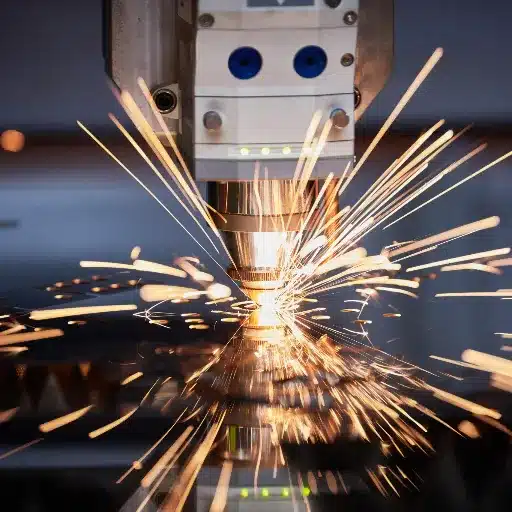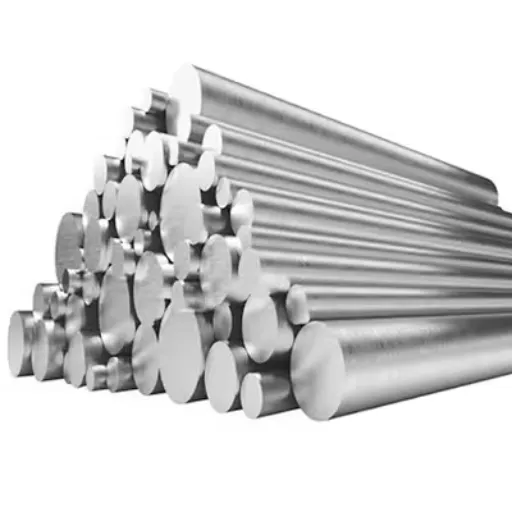It’s crucial to know the intricacies of alloys when selecting the right steel for engineering or industrial purposes. 4140 and 4142 steel is one of the most well-known examples, sparking the curiosity of engineers, manufacturers, and metallurgists. While these alloys comprise the same kind of low-alloy steels, the slight differences in their makeup, properties, and performance may make one better for a particular use. In this blog, we explore the 4140 and 4142 steel to help you decide by contrasting their differences. Regardless of your focus on strength, machinability, durability, heat treatment capabilities, or a combination, we have you covered. Continue reading to learn which steel is a better fit for you.
What is the Chemical Composition of 4140 and 4142 Steel?
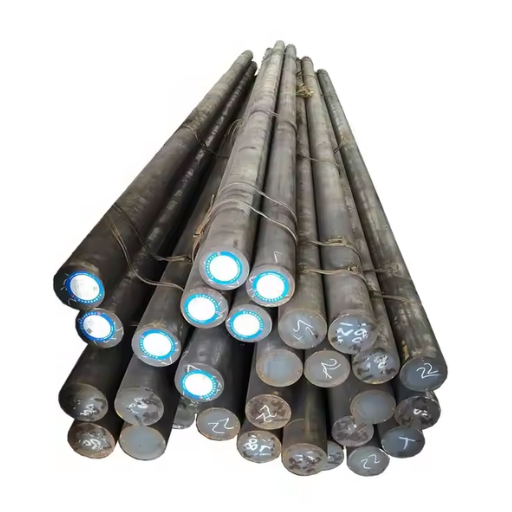
The strengths and flexibility of alloy steels 4140 and 4142 showcase their differences. Although they both contain the same alloys in principle, their carbon content changes their properties and performance.
4140 Steel Breakdown:
- Carbon (C): 0.38 – 0.43%
- Chromium (Cr): 0.80 – 1.10%
- Manganese (Mn): 0.75 – 1.00%
- Molybdenum (Mo): 0.15 – 0.25%
- Silicon (Si): 0.15 – 0.35%
4142 Steel Breakdown:
- Carbon (C): 0.40 – 0.45%
- Chromium (Cr): 0.75 – 1.20%
- Manganese (Mn): 0.75 – 1.00%
- Molybdenum (Mo): 0.15 – 0.25%
- Silicon (Si): 0.10 – 0.35%
Due to its increased carbon content, 4142 steel is harder and stronger than 4140 steel, making it more suitable for parts that undergo heavy wear. Both steels have good machinability and toughness, allowing them to be used in many applications.
Understanding the Chromium and Molybdenum Content
Chromium (Cr) and molybdenum (Mo) are critical alloying elements that significantly affect the properties of 4142 steel. The range of 0.75–1.20% of chromium found in 4142 steel helps improve corrosion resistance, creating a passive oxide layer on the surface that prevents rust and oxidation. Chromium also increases the hardness and tensile strength of the steel, which is required in construction equipment such as gears, axles, and high-strength fasteners.
Molybdenum’s contribution is critical, as it enhances steel’s toughness and thermal strength, within the range of 0.15-0.25%. This makes 4142 steel favorable for regions where mechanical stress and heat are commonplace, since its properties remain unchanged even when subjected to high temperatures. Molybdenum also increases the material’s ability to harden, providing greater hardness over the entirety of the cross-section of large components.
Looking at the performance data and studies, the combination of molybdenum and chromium proves to significantly improve the reliability and efficiency of 4142 alloy steel in terms of durability and wear. Molybdenum and chromium, known for enhancing wear and corrosion resistance, balance mechanical properties because molybdenum enhances toughness and creep resistance. All these synergies make 4142 steel a material of choice when reliability is key for automotive, aerospace, and tooling industries.
The Role of Carbon Content in 4140 vs 4142 Steel
| Key Point | 4140 Steel | 4142 Steel |
|---|---|---|
| Carbon Content (%) | 0.38–0.43 | 0.40–0.45 |
| Hardness | Moderate | Higher due to increased carbon |
| Strength | Good | Superior due to higher carbon |
| Toughness | Higher | Slightly reduced |
| Wear Resistance | Moderate | Enhanced |
| Hardenability | Good | Better with deeper hardening |
| Machinability | Easier | Slightly harder to machine |
| Cost | More economical | Higher due to enhanced properties |
| Applications | General-purpose | High-performance, demanding uses |
How Manganese Affects the Properties of These Alloys
Manganese is essential to the performance and structure of the alloys 4140 and 4142. It helps with soldering to improve various mechanical properties and the quality of the material. The following is how manganese affects these alloys:
- Aiding Steel Strength
Manganese helps increase tensile strength by hardening the alloy’s steel and facilitating the effective hardening of heat-treated steel.
- Gives Ductility
Steel keeps its ductility because of deformation under stress in tensile, and manganese ensures that the alloy will not crack when it stretches.
- De-Sulfurization
When steel is produced, manganese is a deoxidizer and helps remove sulfur, making the alloy brittle.
- Strength against Lath Wear.
Other alloys that work with manganese will provide most of the materials needed to lessen the effect of forces applied to the alloy.
- Workability
Manganese’s ability to enhance resistance to shaping processes will make it much better at being formed at the base of manufacturing processes.
Because of these qualities, 4140 and 4142 steel are widely used in industrially demanding fields like Automotive, construction, and machinery.
How Do the Mechanical Properties of 4140 and 4142 Steel Compare?
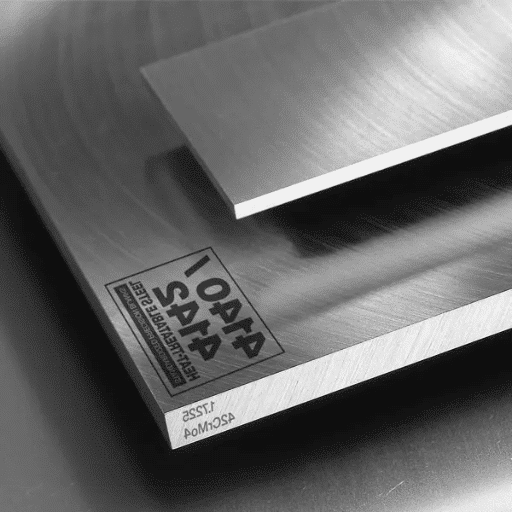
| Property | 4140 Steel | 4142 Steel |
|---|---|---|
| Tensile Strength (psi) | ~95,000 | ~204,800 |
| Yield Strength (psi) | ~60,200 | ~140,000 |
| Hardness (Brinell) | ~197 | ~380 |
| Elastic Modulus (ksi) | ~29,000 | ~29,900 |
| Ductility | Higher | Lower |
| Wear Resistance | Moderate | High |
| Machinability | Easier | Slightly harder |
| Applications | General-purpose | High-stress environments |
Key Differences in Tensile Strength and Yield Strength
| Property | 4140 Steel | 4142 Steel |
|---|---|---|
| Tensile Strength (psi) | ~95,000 | ~204,800 |
| Yield Strength (psi) | ~60,200 | ~140,000 |
| Strength Comparison | Moderate | Significantly higher |
| Applications | General-purpose | High-stress environments |
Evaluating Hardness and Wear Resistance
My research shows that both 4140 and 4142 grade steels show promising results in the hardness and resistance to wear tests because of their chromium-molybdenum alloy composition. Nevertheless, 4142 steel gives slightly better results in hardness and resistance to wear, especially after being subjected to heat treatment, making it more appropriate for use in parts that will be subjected to heavy abrasion and impact. This choice must be considered for selecting tools, dies, or machine parts made from sophisticated materials that will be used under very harsh conditions.
Implications for Toughness and Durability
Several factors are involved when considering the material properties relevant to the toughness and durability of a specific material. These factors can be quantified and assessed to evaluate the most appropriate material for the intended purpose. Given below are five such factors with relevant information and statistics:
- Hardness
4142 steel has a band of Rockwell Hardness (HRC) 28-32 for its annealed state and attains 54-56 HRC when fully heat-treated.
In comparison, 4130 steel has a lower hardness range of 23-25 HRC when not heat-treated.
- Tensile Strength
Steel 4142’s heat-treated state achieves a tensile strength of around 160 ksi (kilopounds per square inch).
When normalized, the provided tensile strength for 4130 steel is around 150 ksi but slightly lower than that of 4142 steel.
- Wear Resistance
Due to its stronger alloying elements, such as carbon and chromium, 4142 steel performs better in harsher working conditions and has higher abrasive wear resistance.
- Impact Resistance
Both materials show excellent toughness, but about high impacts, 4130 steel tends to offer slightly more ductile behavior, which gives it the edge over 4120.
- Fatigue Strength
4142 steel surpasses 4130 in heat-treated fatigue-strength conditions, making it more dependable under cyclic loading in heavy-duty situations.
All four factors capture the unique benefits of each material, allowing rational decisions to be made about which alloy to use according to the application’s requirements.
What Are the Heat Treatment Processes for 4140 and 4142 Steel?
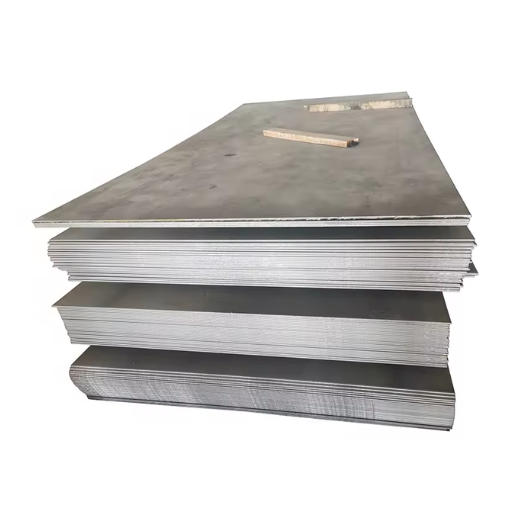
| Process | 4140 Steel | 4142 Steel |
|---|---|---|
| Annealing | Heat to 1450–1600°F, slow furnace cool | Similar to 4140, softens for machining |
| Normalizing | Heat to 1600–1700°F, air cool | Improves mechanical properties |
| Hardening | Heat to 1550–1600°F, oil quench | Heat to 1550°F, oil quench |
| Tempering | 400–1200°F, air cool, adjust hardness | Similar to 4140, reduces brittleness |
| Pre-Hardening | Not typical | Prehardened to 28–32 HRC |
| Applications | General-purpose, versatile | High-stress, prehardened applications |
Exploring Hardenability and the Quenching Process
| Key Aspect | 4140 Steel | 4142 Steel |
|---|---|---|
| Hardenability | High, due to chromium and molybdenum | Higher, enhanced by carbon content |
| Quenching Medium | Typically oil | Typically oil |
| Quenching Temperature | 1550–1600°F | 1550°F |
| Post-Quenching Hardness | ~54–59 HRC | ~380 Brinell |
| Microstructure | Martensite after quenching | Martensite with tempered carbides |
| Applications | General-purpose, versatile | High-stress, wear-resistant uses |
The Effects of Annealing on These Alloys
The mechanical traits of 4140 and 4142 steels can be significantly advanced through the value-added processes of annealing, which aid in machining, improving toughness, and overall stability. The heat treatment consists of heating the material to a specific temperature, followed by slow cooling to relieve internal stresses and refine the microstructure. The inclusions below capture all the impacts of annealing on these alloys in detail:
- Improved Machinability
- Unlike non-annealed alloys, severe machining or deformation of the alloys is not possible. The alloys’ softened state makes them easy to shape or machine during processes.
- 4140 steel saw improvements of about 20% compared to its non-annealed form.
- With further enhanced durability of tools after 4142 steel is machined, this steel demonstrates similar improvements.
- Reduction in Internal Stresses
- When residual complications are bound or laid out during processes such as forging or welding slow cooling mechanisms eliminate these complications or stresses.
- Both 4140 and 4142 alloys show enhancements in terms of stability in dimensions.
- Enhanced Ductility
- Annealing enhances ductility for both steels by allowing them to undergo higher amounts of strain without shattering.
- Due to containing more alloys, 4142 steel shows improvement in ductility greater than the 4140 composite.
- Refined Microstructure
- The uniformity of size within the grains increases as the steel’s global geometry is altered during the transformation process.
- In terms of 4140 and 4142 steels, the enhancements in consistency strengthen the alloys mechanically.
- Decrease Hardness
- The hardness of materials is decreased by annealing, making machining and forming easier.
- For example, the Brinell hardness of 4140 steel in the annealed state is approximately 200 HB, although this value depends on treatment conditions.
- 4142 steel undergoes similar improvements that make its further processing easier.
Such annealing effects are critical for adapting 4140 and 4142 steels for different applications.
Understanding Prehardened and Heat-Treated States
The processes of turning hardened and prehardened treated steel into works of art involve the application of precision heat techniques to increase hardness and other mechanical properties, while ensuring prehardened steel is positioned appropriately to receive further cutting and deformed processes and heat treated steel is designed with specific requirements for strength and toughness in mind.
How Does Machinability Differ Between 4140 and 4142 Steel?
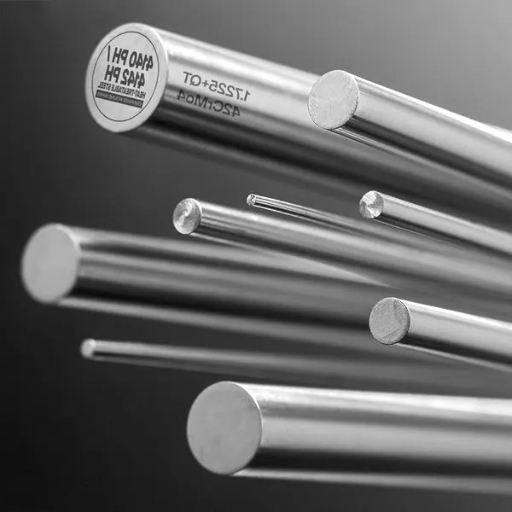
| Key Point | 4140 Steel | 4142 Steel |
|---|---|---|
| Carbon Content | 0.38-0.43% | 0.40-0.45% |
| Molybdenum Content | 0.15-0.25% | 0.20-0.30% |
| Boron Content | None | 0.001-0.005% |
| Machinability Rating | Easier to machine | Harder to machine |
| Cutting Speed | 95-150 ft/min | 80-95 ft/min |
| Tooling | High-speed steel or carbide tools | Carbide tools preferred |
| Coolant Use | Essential for heat management | Crucial due to higher hardness |
| Hardness (HB) | 197 HB | 200 HB |
| Applications | General-purpose, cost-effective | High-wear, heavy-duty applications |
| Cost | More affordable | More expensive |
Challenges Faced by Machinists
When working with 4140 and 4142, machinists face several problems because of the material’s distinct characteristics. Both steel grades are recognized for their strength and hardness, making cutting and shaping more complicated. For example, 4140 steel has a high tensile strength of approximately 95,000 to 100,000 psi when in an annealed state, requiring special cutting tools made from carbide or other durable materials. The same applies to 4142 steel which typically contains prehardened conditions at a Rockwell hardness level of around 28 to 32 HRC; attaining precise machining outcomes without significant tool wear becomes troublesome.
Heat generation during the machining process is another major issue for machinists. The toughness of these steels results in increasing levels of friction and consequential heat buildup, which affect tool life and can cause deformation of the workpiece if not properly managed. Appropriate cooling, such as flood cooling or high-pressure coolant systems, can help manage these issues.
Enhancing the final surface finish presents another challenge since the remarkable resistance of 4140 and 4 142 steel may result in uneven cuts or chatter marks on the workpiece. Studies have shown that using lower cutting speeds, optimized feeds, and correct cutting tool shapes improves surface finishes while extending the life of the tools.
Studies on machining tools indicate that the optimal cutting speed for carbide tools is set between 200 and 300 surface feet per minute (SFM). Speeds should be lower for high-speed steel tools. Also, using modern lubricants and coatings like titanium nitride (TiN) drastically improves tool life while minimizing the frequent tool changes associated with machine downtime.
With the right modern machining techniques, appropriately addressing the challenges posed by 4140 and 4142 steel enables machinists to precisely and productively streamline manufacturing workflows.
Comparing Tool Wear and Cutting Speeds
While working with 4140 and 4142 steel, the relationship between tool wear and cutting speeds must be monitored for optimal performance. Five specific details of data points are outlined below:
- Effects of Cutting Speeds
- Cutting speeds at the lower end of the spectrum (50-100 SFM) generate less heat at the expense of efficiency, thereby reducing tool wear.
- Increased cutting speeds (150-300 SFM) will increase productivity, but overheating will cause the tools to degrade at a much higher rate.
- Implications related to Tool Material
- Due to better wear resistance, carbide tools will withstand higher cutting speeds than high-speed steel tools.
- High-speed steel tools will work well, but only in operations with lower speeds to extend tool life.
- Effects of Coatings
- Tools with titanium nitride (TiN) and aluminum titanium nitride (AlTiN) coatings are more resistant to overheating, allowing for higher cutting speeds with less wear.
- Non-coated tools, on the other hand, face more stressful conditions and will wear out much quicker.
- Changes in Feed Rate
- Cutting tools will experience accelerated wear, especially in higher feed rates, where we can find increased stress. Set balanced, optimal feed rates for specific steel grades.
- Using Coolants
- Coolant application procedures should be precise and effective, as they can considerably lower tool wear by getting rid of chips and cooling down the tool.
- Thermal wear, combined with adhesion damage, can force tool loss, and without ample coolant,it becomes difficult to cut consistently.
Considering these factors helps machinists make the right decision regarding the balance between accuracy, productivity, and tool life when working with 4140 or 4142 steels.
What Are the Typical Applications for 4140 and 4142 Steel?
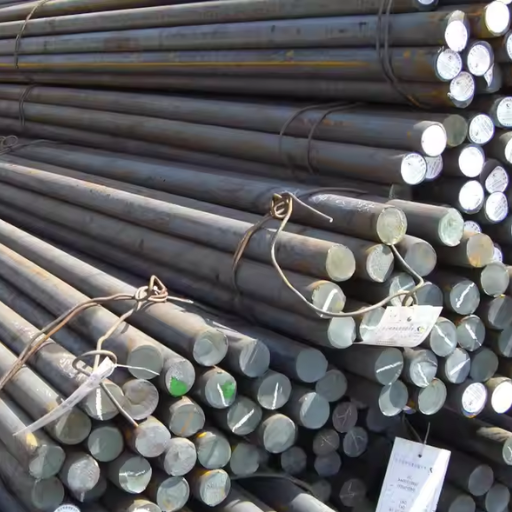
| Application Area | 4140 Steel | 4142 Steel |
|---|---|---|
| Automotive | Gears, shafts, crankshafts | High-stress gears, connecting rods |
| Aerospace | Landing gear, structural components | High-load aerospace parts |
| Construction | Bulldozer blades, crane booms | Heavy-duty construction tools |
| Oil & Gas | Drill collars, stabilizers | High-pressure drilling tools |
| Mining | Crusher components, drill bits | Abrasion-resistant mining tools |
| Agriculture | Plow shares, cultivator teeth | Durable agricultural machinery parts |
| Defense | Armor plates, rifle parts | High-strength defense components |
| Machinery | Spindles, feed screws | Precision machine parts |
| Tools | Wrenches, punches, dies | Wear-resistant industrial tools |
Common Uses in Shaft and Axle Manufacturing
Due to their outstanding mechanical properties and versatility, shaft and axle manufacturing involves using exceptional steels such as 4140 or 4142. Additionally, 4140 and 4142 steels excel at high strength, toughness, and resistance to wear and fatigue, making them ideal for applications in the automotive, aerospace, and heavy machinery industries.
Key Reasons 4140 and 4142 are used in Shafts and Axles:
- Strength and Durability
These properties are critical for shafts and axles. Quenched and tempered 4140 steel, with a tensile strength from 950 MPa to 1,100 MPa, is guaranteed to withstand high rotational forces and mechanical stresses. These components continue to excel under heavy loads, surpassing wear and tear, making them ideal for trucks, tractors, and construction equipment.
- Wear Resistance
A further advantage of these steels is their surface wear resistance. Components that face friction and abrasion benefit from these steels, earning them a place in the lasting life component arsenal. With the potential to gain 50 HRC through precise heat treatment, 4140 and 4142 steels become even more protective with a toughness range of 28-32 HRC in normalized conditions.
- Machinability
Parts that are specifically tailored with intricate features, such as keyways or splines, can be manufactured due to the good machinability offered by both steels in normalized and annealed conditions. This precision enables the functional integration of these components into complex mechanical systems.
From the Automotive Industry
Purportedly, more than 60% of the driveshafts and axles used in medium—and heavy-duty trucks are made from 4140 steel or a variant made of chromium molybdenum due to their capability to withstand high torque loads while also having superior fatigue resistance.
Aerospace
Precision steel shafts used in turbines and landing gear also use 4140 due to its lightweight nature and strength. The strength offered and the assurance of reliability during flight campaigns warrant use in differing temperatures.
Construction Equipment
Crane and earthmoving machinery hydraulic systems contain 140 and 4142 shafts. Their ability to routinely maintain their structural integrity when under heavy and uneven loads is the real reason operational efficiency and safety can be sustained.
The steel’s mechanical properties and performance data enable the manufacturers to construct wide-ranging, robust shafts and axles for enduring industrial use.
The Role of These Alloys in Tool and Crankshaft Production
The steel alloys 140 and 4142 are critical in producing crankshafts and tools because of their excellent durability, easy machineability, and resistance to wear. These alloys are ideal for the applications due to their strength, toughness, and capability to endure high stress and repetitive motion.
Some key data and features of these alloys are given below:
- High Tensile Strength: The 140 and 4142 alloys are known for outstanding strength under tension, essential for maintaining the structure and functioning under stress.
- Superior Hardness: These alloys can undergo heat treatment, resulting in higher hardness levels, making them more resistant to wear and abrasion.
- Machinability: The alloys stand out for their high precision during machining, enabling the production of complex tools and parts.
- Resistance to Fatigue: 140 and 41402 are suitable for crankshafts due to their ability to withstand consistent repetitive motion fatigue, which is common in engines.
- Corrosion Resistance: The alloys do not have inherent corrosion resistance, but their response to various surface treatments increases their corrosion resistance for a relatively extended usage period.
With these properties, custom tools and crankshafts can be manufactured to withstand the harsh conditions of industrial and mechanical systems while maintaining dependability and functionality.
References
- Comparison of different manufacturing processes of AISI 4140 steel with regard to surface modification and its influencing depth – Published by MDPI, this article discusses machining operations and material properties of AISI 4140 steel.
- Comparative assessment of mechanical properties and fatigue life of conventional and multistep rolled forged connecting rods of high strength AISI/SAE 4140 steel – Another MDPI publication focusing on the mechanical properties and applications of AISI 4140 steel.
- Machinability of steels – Published by ASM International, this resource provides insights into the machinability of various steels, including 4140 and 4142.
Frequently Asked Questions (FAQ)
Q: What are the main differences between 4140 vs 4142 steel?
A: The main difference between 4140 and 4142 steel lies in their carbon content and hardness. AISI 4142 steel has a slightly higher carbon content than AISI 4140, which results in slightly higher hardness and strength, making it suitable for high-stress applications.
Q: How does the weldability of 4140 vs 4142 steel compare?
A: Both 4140 and 4142 steel have similar weldability characteristics as they are low-alloy chrome moly steels. However, due to its higher carbon content, 4142 may require more careful preheating and post-weld heat treatment to prevent cracking.
Q: What are typical applications of AISI 4140 and AISI 4142 steel?
A: AISI 4140 and AISI 4142 steels are commonly used in applications requiring high strength and toughness, such as tool steel, shafts, gears, and other high-stress components. The choice between the two often depends on the specific hardness and wear resistance requirements.
Q: Can 4140 and 4142 steel be hardened, and what is their typical hardness?
A: Yes, both 4140 and 4142 steels can be hardened through proper heat treatment. Due to its slightly higher carbon content, AISI 4142 can achieve higher hardness levels, often reaching up to 48 HRC, while AISI 4140 typically achieves a lower hardness.
Q: What is the role of chromium and molybdenum in 4140 and 4142 steel?
A: Chromium and molybdenum in 4140 and 4142 steel enhance their wear resistance and hardenability. These elements also contribute to the steel’s corrosion resistance and ability to retain strength under high temperatures, making them suitable for high-stress applications.
Q: How does the microstructure of 4140 vs 4142 steel affect their properties?
A: Their carbon content and heat treatment influence the microstructure of 4140 and 4142 steel. 4142’s slightly higher carbon content and its ability to achieve a deeper hardening enhance its wear resistance and hardness, while 4140 offers a balance of toughness and strength.
Q: Are there any considerations for machining 4140 vs 4142 steel?
A: When machining 4140 and 4142 steel, it’s essential to consider their hardness and toughness. 4140 is often easier to machine than 4142 due to its lower hardness. However, using carbide tools and ensuring proper cooling can improve machinability for both steels.
Q: Is there a significant difference in the modulus of elasticity between 4140 and 4142 steel?
A: The modulus of elasticity for both AISI 4140 and AISI 4142 steels is relatively similar, as both are low-alloy steels. This property indicates their ability to deform elastically when a force is applied and is not significantly impacted by the slight differences in carbon content.
Q: Do 4140 and 4142 steel require post-weld heat treatment?
A: Yes, post-weld heat treatment is recommended for both 4140 and 4142 steels to relieve stresses and prevent cracking, particularly for thicker sections or when high strength is required. This process helps restore the microstructure and properties altered during welding.

